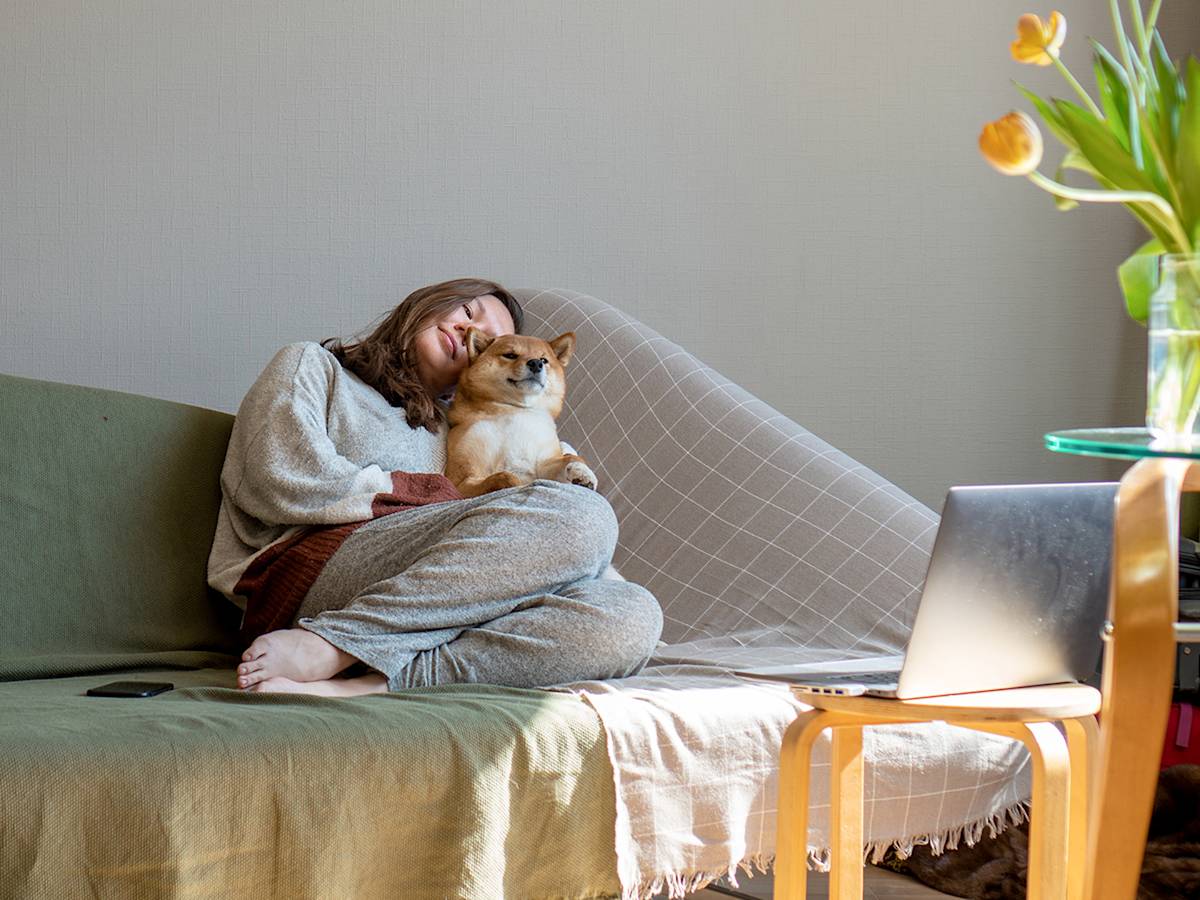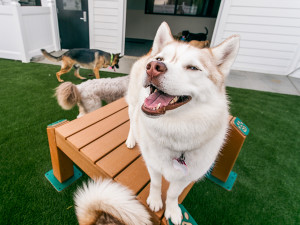Money Talks: The Dollars of Dog Parenthood
We crunched some numbers and yup, they’re worth every penny.
Your dog’s puzzled face the first time they see their reflection in the mirror. Their dizzying excitement when you get home from work. The ballooning pride you feel when they ace a new trick. Priceless. A lot of other aspects of dog parenting…not so much.
There are some very real costs associated with taking good care of your pup, and the sooner you put together a realistic budget, the better. It’s not sexy, we know, but planning ahead is part of the responsibility of making sure your doggo stays healthy and safe. “You can get caught up in the mindset that the only things they’re going to need are food, toys, and a rabies shot,” says Dr. Elizabeth Shines, DVM. “Sometimes you get that lucky and all your dog needs is preventative care, but in most cases, there’s a lot more to [pet parenting] than food and vaccines.”
Read on for a rundown of the most common expenses you can expect and should budget for during the first year. (Keep in mind that these are estimates and ranges because costs can vary based on your location and situation).
First, find your dream dog
The amount you spend on your pup is going to vary pretty dramatically depending on where you get them. If you buy a purebred dog from a breeder, chances are you’ll end up paying a couple of grand. If you adopt, it depends on the dog’s location, age, and size. In general, adoption fees for small dogs and puppies are higher due to demand. At larger-capacity city shelters, adoption fees range from $75 for an adult dog to $250 for a puppy. Adopting from an independent rescue organization will run you around $500.
Next, schedule the first vet visit
Dr. Shines recommends a wellness exam within the first few days of adoption: “It’s important to get a baseline or a bill of health so you have a good starting point.” If your dog is not already spayed or neutered, surgery costs are based on sex and size (neutering a male dog is cheaper because it’s less invasive), but local low-cost clinics can offer lower cost surgeries if you’re eligible. Some pet insurance plans will cover spay/neuter surgeries, but it really pays out in an emergency. Quotes will differ for a mixed-breed puppy (with no predisposed genetic health concerns) and a senior dog with pre-existing conditions.
Rabies vaccines cost around $20. After your pup’s first rabies vaccine, boosters are every three years. The costs of most other vaccines range from $30-$95. Puppies will need three sets of viral vaccines but check your dog’s records first to see what vaccines the shelter may have already done. Other vaccines are recommended on a case-by-case basis, determined by your location, such as canine influenza in the city and Lyme in the ’burbs.
These are annual estimates…
Wellness exam: $65
Spay/neuter surgery: $50-500
Monthly flea/tick preventatives (replenished quarterly): $40-70
Vaccinations: $115-430+
Bloodwork (CBC): $95
4Dx Snap Test (screens for tick-borne infections): $50
Heartworm prevention (twice a year): $40-60
Microchip and implantation: $20-60
Pet insurance: $25-100+
Emergency vet visits (depending on the severity of the issue): $250-1,500+
Then, stock up on standard supplies
A four-pound bag of kibble starts at around $15 and will last about a week for a small dog. It’s all uphill from there. The higher the quality of the dog food, the more expensive it will be. And if your dog has allergies or health concerns that require a special diet for, the price tag continues to go up. The same goes for dog treats, and you’ll probably spend more on treats in the first year, using them to train your pup. Pee pads and poop bags are two items you can never have too many of. Regardless of the size of your pup (how large a pad you’ll need to accommodate their accidents), you can expect them to pee or poop every couple of hours when they aren’t sleeping. Do the math!
Food (per month): $40-500+
Treats (per package): $5-20
Pee pads (per 30-count package): $15-60
Poop bags (120-pack): $7
Dog shampoo: $5-20
Stain/odor remover: $10-20
After that, itemize your support system
Some of these expenses are arguably the most important ones. Perhaps this isn’t your first rodeo and you can train your pup yourself; if not, professionals typically recommend multiple sessions to see results. If your dog is short-haired and you work from home, you probably don’t need to worry about grooming, dog walking, or doggie daycare expenses. And unless you have a trusted sitter for when you go out of town, boarding costs can vary based on quality — do you want your pup spending the night at Holiday Inn or Ace Hotel?
Grooming: $10-75
Dog walker: $15-30
Doggie daycare: $30-50
Dog sitter or kennel: $40-75+
Training (per session): $50-100
Last but not least, snag all the fun stuff
Namely, all the things on your Pinterest board. Of course, the cost of these items will depend on your dog’s size (and your style) but we ballparked it.
Bed: $15-200
Crate: $18-70
Leash: $10-60
Collar or harness: $10-50
Toys: $10-100
Food and water bowls: $4-50
Armed with this shopping list, you should be all set to start stocking up!






